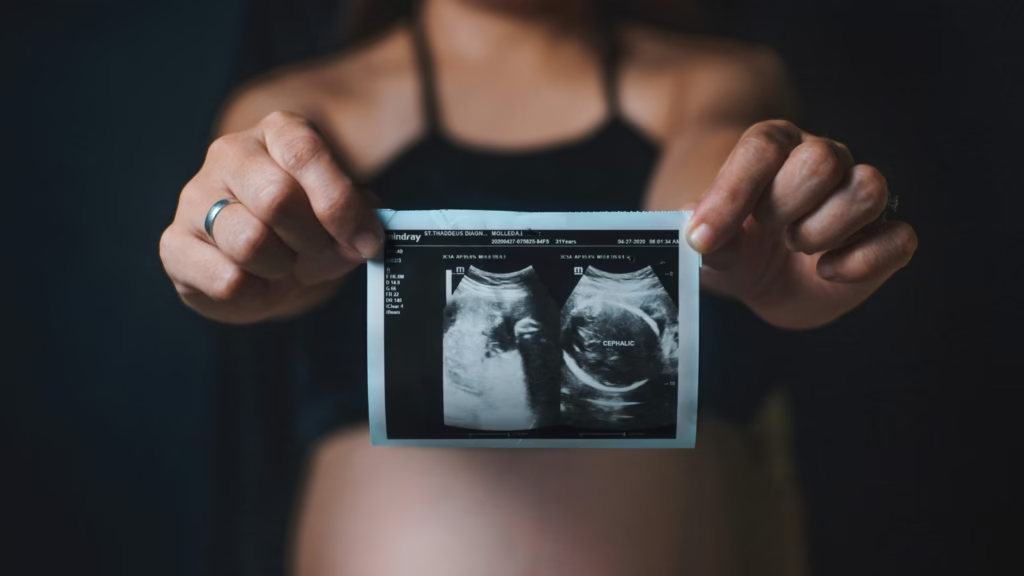Introduction
Egg donation is a profound reproductive option that allows individuals to provide their eggs to help others build families. This selfless act supports those facing infertility, same-sex couples, single parents by choice, and others on their journey to parenthood. According to the Centers for Disease Control and Prevention, over 30,000 women donate eggs each year in the United States, contributing to thousands of successful pregnancies through assisted reproductive technology.
For first-time donors, understanding what lies ahead is crucial for both preparation and peace of mind. The egg donation timeline encompasses several weeks of commitment, from initial screening to post-retrieval recovery. While the process may seem overwhelming at first, breaking it down into manageable stages can help donors navigate the egg donation timeline and pass this rewarding journey with confidence.
This comprehensive guide will walk you through what to expect at each phase of the egg donation timeline, providing clarity and setting realistic expectations for those considering this life-changing gift.
Preparing for Egg Donation Timeline
Understanding Eligibility
Before embarking on the egg donation timeline, it’s important to understand who qualifies as a donor. Most fertility clinics and egg donation agencies look for donors between the ages of 21-32, though some may accept donors up to age 35. This age range typically ensures optimal egg quality and quantity.
Beyond age, donors must be in good physical health with a BMI (Body Mass Index) generally between 19-29. A comprehensive medical history review will screen for genetic disorders, serious hereditary conditions, and other health factors that might affect eligibility. According to research published in the Journal of Assisted Reproduction and Genetics, donors with certain genetic conditions may be excluded to prevent transmission to potential offspring.
Psychological evaluation is another critical component of the screening process, typically taking place 2-3 months before donation. This evaluation assesses a donor’s emotional readiness and ensures they understand the implications of their decision. Mental health professionals help determine if candidates have realistic expectations and are making an informed choice without external pressure.
Medical Screening Process
Once initial eligibility is established, the medical screening phase begins. This typically takes 4-6 weeks and includes comprehensive blood tests to check for infectious diseases (HIV, hepatitis, STIs), hormone levels, and genetic carrier screening for conditions like cystic fibrosis and spinal muscular atrophy.
Transvaginal ultrasounds are performed to examine ovarian health, including antral follicle count (AFC), which helps predict how well someone might respond to stimulation medications. According to a study in the Fertility and Sterility journal, an optimal AFC typically ranges between 10-20 follicles across both ovaries.
Results from these screenings generally take 2-3 weeks to process. During this waiting period, donors should maintain healthy habits and avoid substances that could affect fertility, such as excessive alcohol, tobacco, or recreational drugs. The American Society for Reproductive Medicine provides guidelines that most clinics follow for screening protocols.
Financial and Legal Prep
Compensation for egg donation typically ranges from $5,000 to $10,000 per cycle in the United States, with variations based on location, clinic policies, and donor characteristics. This compensation acknowledges the time, discomfort, and commitment involved in the process.
Before proceeding, donors must sign detailed consent forms that outline the medical procedures, potential risks, and what happens to the eggs after retrieval. This documentation phase usually occurs 2-3 months before the actual donation cycle begins.
Legal contracts are essential and clearly define the donor’s rights, responsibilities, and relationship (or lack thereof) to any resulting children. Most clinics require donors to consult with an independent attorney specializing in reproductive law to ensure they fully understand these agreements. As noted in research published in the Georgetown Journal of Gender and the Law, these contracts protect all parties involved and address complex ethical considerations.
The Stimulation & Collection Phase
Hormone Treatment Schedule
The active phase of the egg donation timeline begins with hormone injections, typically starting on day 2 or 3 of your menstrual cycle. This stimulation phase lasts approximately 10-14 days and involves daily self-administered injections of follicle-stimulating hormone (FSH) and luteinizing hormone (LH).
These medications stimulate your ovaries to produce multiple eggs instead of the single egg normally released during ovulation. According to research in Human Reproduction, most donors produce between 10-25 eggs during a stimulated cycle, compared to the single egg in a natural cycle.
During the final days of stimulation, donors also take a “trigger shot” of human chorionic gonadotropin (hCG) or GnRH agonist, which finalizes egg maturation and prepares them for retrieval. This critical injection is precisely timed, usually 35-36 hours before the scheduled egg retrieval procedure.
Monitoring & Adjustments
Throughout the stimulation phase of egg donation timeline , donors attend frequent monitoring appointments at their fertility clinic—typically every 2-3 days initially, increasing to daily visits as retrieval approaches. These appointments include transvaginal ultrasounds to track follicle growth and blood tests to measure estrogen levels.
Based on these results, fertility specialists may adjust medication dosages to optimize response and minimize risks. According to the National Institutes of Health, personalized stimulation protocols result in better outcomes and reduced side effects compared to standardized approaches.
Donors should be vigilant about recognizing warning signs during this phase, particularly symptoms of ovarian hyperstimulation syndrome (OHSS). These include severe abdominal pain, significant bloating, rapid weight gain, shortness of breath, or decreased urination. While modern protocols have reduced OHSS risk significantly, prompt reporting of concerning symptoms is essential.
Egg Retrieval Procedure
The egg retrieval procedure is scheduled precisely before natural ovulation would occur—typically 35-36 hours after the trigger shot. This outpatient procedure usually takes 20-30 minutes and is performed under mild sedation or anesthesia.
During retrieval, a physician uses ultrasound guidance to direct a thin needle through the vaginal wall into the ovaries. Each mature follicle is carefully aspirated to collect the eggs. According to the Journal of Human Reproductive Sciences, modern retrieval techniques have success rates of collecting 80-90% of mature follicles.
Recovery immediately following the procedure typically takes 1-2 hours at the clinic. Most donors experience moderate pelvic discomfort, cramping, and sometimes light spotting. These symptoms usually subside within 24-48 hours, though some bloating may persist for up to a week as the ovaries return to their normal size.
Post-Retrieval Steps
Immediate Recovery
The 24-48 hours following egg retrieval are crucial for proper recovery. Common side effects include mild to moderate pelvic discomfort, bloating, and spotting. According to a study in the Journal of Assisted Reproduction and Genetics, most donors return to normal activities within 1-2 days, though strenuous exercise should be avoided for about a week.
During recovery, donors should prioritize rest and hydration. Maintaining adequate fluid intake helps flush remaining hormones from your system and reduces discomfort. Warm compresses can alleviate cramping, and over-the-counter pain relievers like acetaminophen are typically recommended for discomfort.
Activities to avoid during the first week include heavy lifting (over 10 pounds), high-impact exercise, swimming, bathing (showers are fine), and sexual activity. Most clinics schedule a follow-up appointment 1-2 weeks after retrieval to ensure proper healing and address any concerns.
Egg Processing & Storage
Once retrieved, your eggs undergo immediate evaluation by embryologists who assess their maturity and quality. According to the American Society for Reproductive Medicine, approximately 80% of retrieved eggs are typically mature enough for fertilization or freezing.
For fresh donation cycles, eggs may be fertilized immediately with sperm from the intended parent or donor through conventional insemination or intracytoplasmic sperm injection (ICSI). Alternatively, eggs may be cryopreserved through vitrification, a flash-freezing technique that preserves egg quality for future use.
Donors typically receive a report within 24-48 hours after retrieval detailing how many eggs were collected and their maturity status. This information helps donors understand the success of their cycle while maintaining appropriate boundaries regarding the ultimate use of the donated eggs.
Follow-Up & Future Planning
A post-donation health check usually occurs 2-4 weeks after retrieval. This appointment confirms that your ovaries have returned to their normal size and function, hormone levels have stabilized, and you’ve fully recovered from the procedure.
Many donors consider future donations after their first experience. Most clinics recommend waiting at least three months between donation cycles to allow your body to fully recover. According to the Society for Assisted Reproductive Technology, the majority of clinics limit donors to six lifetime donations to minimize health risks.
If you choose to continue donating, you’ll likely establish a donor profile that remains active with your clinic or agency. This profile includes your physical characteristics, educational background, personal interests, and medical history, helping intended parents select a donor whose attributes resonate with them.
Key Tips & Expert Advice
Preparing physically for egg donation timeline begins 2-3 months before your cycle. Fertility specialists recommend maintaining a balanced diet rich in antioxidants, staying well-hydrated, getting regular moderate exercise, and ensuring adequate sleep. Research published in Fertility and Sterility suggests that these lifestyle factors can positively influence egg quality.
Mental preparation is equally important. Dr. Alice Domar, a leading psychologist specializing in reproductive health at Harvard Medical School, recommends stress-reduction techniques like mindfulness meditation, gentle yoga, and journaling to navigate the emotional aspects of donation.
Common mistakes to avoid include missing medication doses, skipping monitoring appointments, or not disclosing all medications (including supplements) to your healthcare team. According to a survey by the Egg Donor Program Association, donors who maintain open communication with their medical team report higher satisfaction with their donation experience.
Real-life donor experiences highlight both challenges and rewards. Sarah, a three-time egg donor from California, shares: “The injections were initially intimidating, but they became routine after a few days. What surprised me most was the profound sense of fulfillment knowing I’d helped create a family that might not have been possible otherwise.”
Conclusion
The egg donation timeline represents a commitment of approximately 3-4 months from initial screening to full recovery, with the most intensive period spanning about 2-3 weeks during the stimulation and retrieval phases. Throughout this journey, clear communication with your medical team ensures the process proceeds smoothly and safely.
Understanding what to expect at each stage helps first-time donors approach the process with confidence and realistic expectations. From eligibility screening to post-donation recovery, each step serves an important purpose in creating a positive outcome for both donors and recipients.
As you consider egg donation, remember that your contribution extends far beyond the medical procedure itself. For recipients struggling with infertility or biological limitations, your generosity opens doors to family-building opportunities that would otherwise remain closed. According to the American Society for Reproductive Medicine, thousands of children are born each year through egg donation, creating ripples of joy that transform countless lives.
If you’re considering becoming an egg donor, we encourage you to ask questions, seek support, and reflect on your motivations. The egg donation timeline may require temporary lifestyle adjustments, but the lasting impact of your decision can be immeasurable.
Frequently Asked Questions
Will egg donation affect my future fertility?
Research published in the Journal of Assisted Reproduction and Genetics indicates that egg donation does not diminish your ovarian reserve or affect your ability to conceive naturally in the future. The hormones used stimulate eggs that would naturally be lost during that menstrual cycle. However, as with any medical procedure, there are rare risks like infection or bleeding that could potentially impact fertility.
Can I exercise during the egg donation timeline ?
During the stimulation phase (10-14 days before retrieval), moderate exercise is generally acceptable, but high-impact or strenuous activities should be avoided. The enlarged ovaries are more susceptible to torsion (twisting), which can cause complications. After retrieval, most clinics recommend avoiding exercise for 5-7 days to allow proper healing and minimize discomfort.
Will I share genetic ties with any children born from my donated eggs?
Yes, children born from your donated eggs will share your genetic material. However, legally and socially, you are not considered their parent. The legal agreements signed before donation establish that you relinquish all parental rights and responsibilities. Some programs offer options for varying levels of contact between donors and offspring when they reach adulthood, ranging from anonymous to known donation arrangements.
What if I need to cancel my donation cycle after starting medications?
Circumstances sometimes require cancelling a cycle mid-process. If cancellation occurs for medical reasons (poor response to medications, unexpected health issues), most clinics provide partial compensation based on how far you progressed. If you choose to cancel for personal reasons, compensation policies vary by clinic. It’s important to understand these policies before starting the process.
How do clinics protect donor privacy?
Clinics implement robust privacy measures to protect donor identities, adhering to HIPAA regulations and reproductive privacy standards. Your identifying information is typically separated from your donor profile using numerical codes. Recipients generally receive non-identifying information such as physical characteristics, education, and medical history. The degree of anonymity can vary based on program policies and your preferences, with some donors opting for identity release when offspring reach adulthood.







